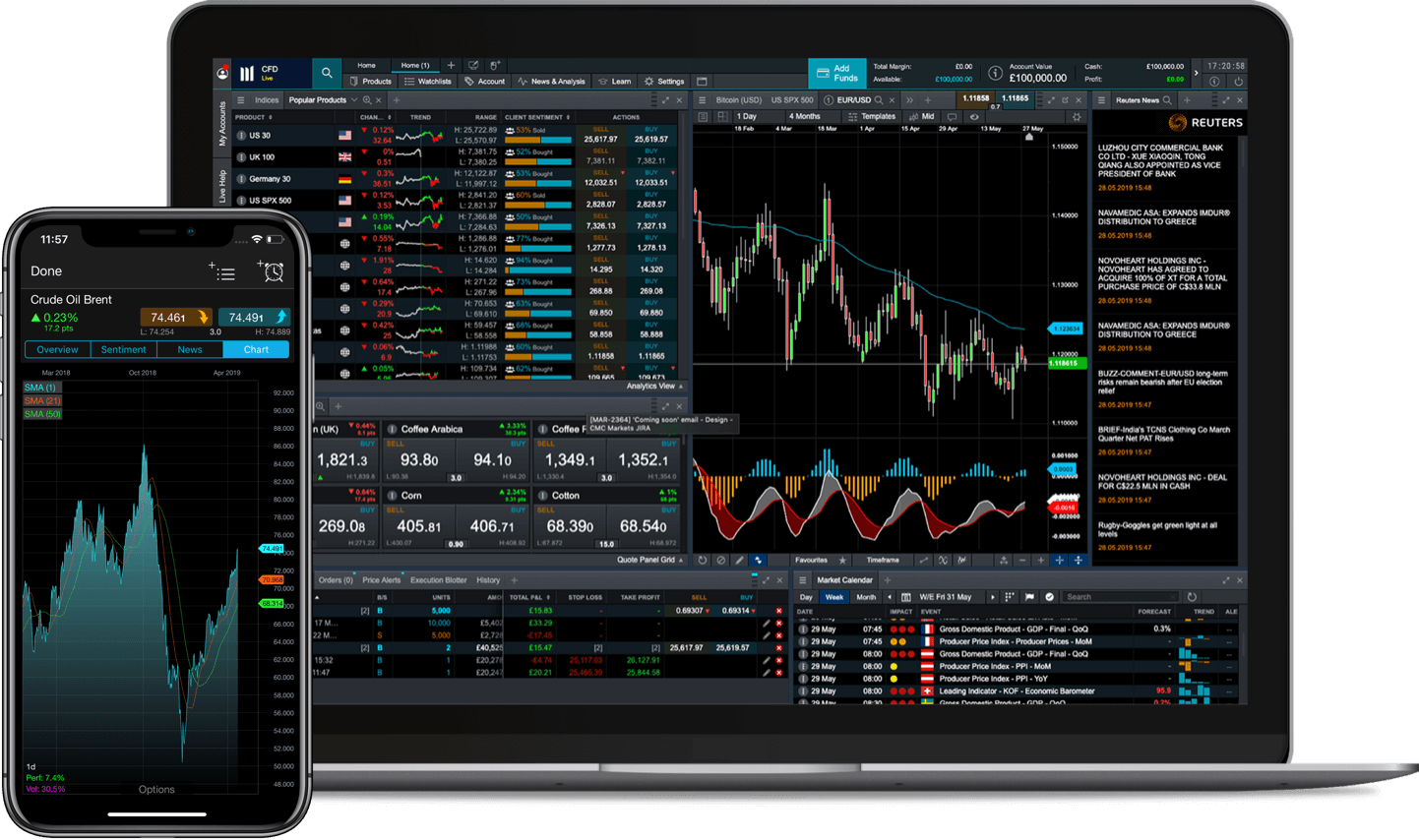Let’s take an example of a CFD trader using a margin account to open a buy position on Company ABC’s stock.
The trader deposits £5,000 into his account and borrows £5,000 more from the broker. He thinks that the company’s share price will increase over time, so he places a buy bet for 1,000 shares at £10, equalling a total of £10,000. Seeing as our margin rate for shares stands at 20%, the trader will only use £2,000 of his account value in order to open the position and gain exposure to the share.
There are two scenarios that could follow:
1. There is a positive news release and the stock price doubles to £20 per share. The trader could then close out the position at £20,000. After repaying the £5,000 borrowed from the broker, and discounting the original £5,000 that he invested, this leaves the trader with a profit of £10,000.
2. The company’s earnings report shows a negative balance sheet and cash flow, causing its stock price to drop to £5 per share. Since the trader has 1,000 shares open, this would equal a loss of £5,000, which is the same figure as the trader’s original investment. As his account value now only reflects the 50% maintenance margin requirement that is required to keep the position open, he is at risk of a margin call and will be forced to deposit more funds into the account.
The CFD trader should remember that he may run into additional costs from opening a position, including holding costs if carrying positions overnight, and execution fees if he wants to set a guaranteed stop-loss order (GSLO), for example.

















